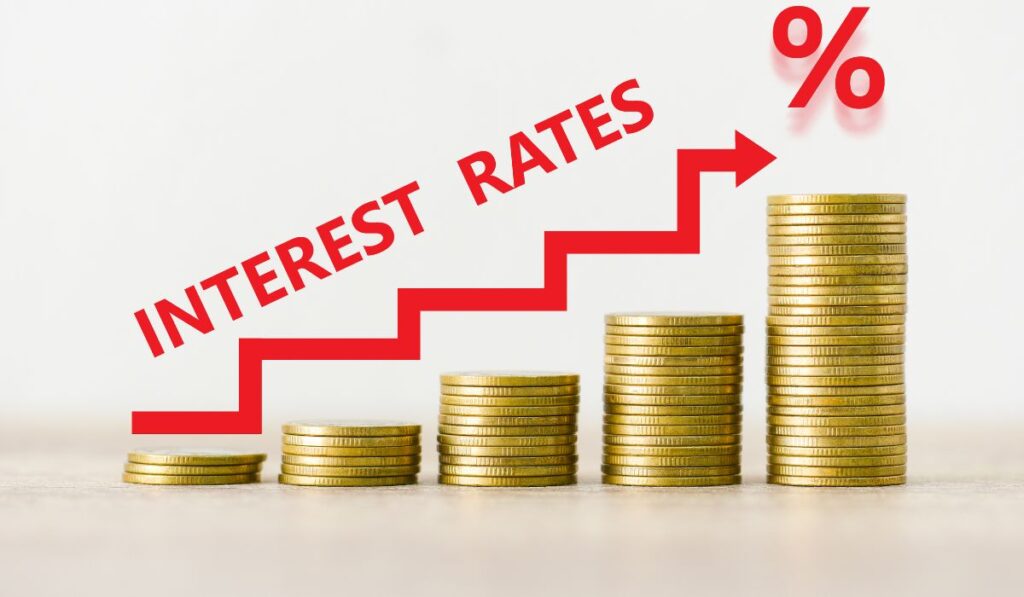High interest rates are now shaping almost every move in the housing market. Many people feel that buying a home has become harder. Others feel unsure about selling because they do not want a higher mortgage rate on their next place.
Right now, the market is in a strange holding pattern. Buyers are hesitant to jump in, and sellers are holding back, reluctant to give up their low mortgage rates. Many families are feeling nervous as they look at the higher monthly payments, creating a moment in real estate that most people never saw coming.
Rising interest rates, high home prices and limited affordable options are combining to create a tough environment. Still, this guide can help bring some clarity. This guide explains the steps buyers and sellers can take to handle these conditions with confidence.
The Basics of Interest Rates and How They Impact Payments
Interest rates rise when the Federal Reserve tries to slow inflation. When the economy runs hot, rates go up. When inflation cools, rates may fall. Mortgage lenders follow these changes. This is why a loan that felt cheap a few years ago now feels heavy.
A simple example helps show the problem. A $400,000 loan at a rate below 3% costs around $1,600 per month for principal and interest. When the rate rises to 6.5%, the same loan costs more than $2,500 per month. That is almost $900 more every month.
For some families, a small increase in rate reduces their buying power. According to national data, even a $1000 price jump can push more than one hundred thousand households out of the market.
Little changes like these may look small on paper, but they reduce buying power quickly and make it harder for many people to take the first step toward owning a home.

Why Buyers Are Struggling in Many Markets
Across the country, many buyers feel that owning a home is harder than it used to be. First time buyers carry some of the heaviest challenges. They save what they can yet rising rents and everyday expenses take more from their budget each month. The average age of first-time buyers keeps rising, and high interest rates make the first step toward a home feel even further away.
Middle income buyers feel squeezed as well. A few years ago, families earning $75000 to $100,000 could afford nearly half of all listings. Today, they can afford only about one fifth. Homes priced under two hundred sixty thousand dollars are limited, and many new homes are still above this range.
Lower income households face the steepest challenge. National data shows that buyers earning under fifty thousand dollars can afford less than ten percent of active listings. In some areas, choices are close to zero. Investors are also adjusting. Higher borrowing costs lower returns, so many shift toward cheaper markets and smaller homes.
Why Many Sellers Feel Stuck in Place
Across markets, sellers face their own set of challenges. A large number of homeowners hold very low mortgage rates from past years, and giving up those rates feels difficult. A low rate brings a sense of security, and moving to a new home with a much higher rate feels like a step backward, even for owners with strong equity. This creates what many call the lock in effect, which keeps people in their homes longer and reduces the number of listings.
The lock in effect has played a major role in the inventory shortage. New homes are being built, and some states, especially in the South and parts of the West, have seen more listings return. Even with this progress, the market is still far from balanced. Affordable homes remain limited, and tight supply keeps prices from falling. Both buyers and sellers feel the weight of this situation, and the entire market slows down as a result.
Some sellers who need to move are offering repairs, closing cost help or small price cuts to attract buyers. These steps can help close the gap between what buyers can manage and what sellers hope to earn. Even so, many owners prefer to wait and see if interest rates begin to ease in the future.
Simple Strategies to Help Sellers Move Forward
Even in a high rate market, sellers still have paths to move ahead. A few simple steps can make the process smoother and help attract the right buyers.
Start with a Fair and Realistic Price
Setting a fair price helps attract more buyers. High rates make monthly payments harder, so reasonable pricing brings stronger interest and keeps the selling process moving forward.
Offer Small Concessions When Needed
Many buyers need help with closing costs or repairs. A small credit can ease their budget, build trust and keep the deal on track during a slower market.
Think About Renting If Selling Feels Uncertain
Some owners need to move but prefer waiting for better conditions. Renting the home provides extra time, steady income and flexibility while the market continues to shift.
Explore a Direct Cash Sale for a Faster Path
A cash buyer helps when speed matters or repairs feel overwhelming. This option supports inherited homes, older properties and sellers facing deadlines or stressful situations.
The Bigger Picture and What May Happen Next
High interest rates have created real stress for many homeowners, especially those facing late payments, costly repairs or life changes that require a fast move. Even though rates may stay high for some time, sellers in tough situations still have options that help them move forward without waiting for perfect conditions.
The need for affordable homes remains strong, and buyers continue to search in every market. This steady demand gives distressed sellers a chance to find a path that fits their timeline. Builders are adding new homes, but it will take time for supply to catch up. Until then, many buyers look toward homes that are lived in, even if they need work.
A direct cash sale can also create a simple path forward, especially when timelines are tight or repairs feel overwhelming. This option is likely to stay strong in the future because high rates make fast, flexible offers more attractive to both sides.

Conclusion
High interest rates have changed the housing market in many ways. Buyers are looking at smaller homes. Many sellers are holding onto the low rates they already have. Some families move to more affordable areas, while others decide to wait and watch the market. Even with these challenges, there is still room for progress.
Understanding how rates affect payments and choices helps reduce the stress. Buyers and sellers who stay flexible and open to creative solutions can still reach their goals, even in a high-rate world.
If you are planning your next move, take a moment to look at your budget, your timeline and your comfort level. For a direct cash sale, contact Sensible Property Solutions LLC to explore a clear, simple option that helps you move forward with confidence.
Disclaimer: Sensible Property Solutions, LLC is not a financial advisor, attorney, or tax professional. This article is purely for illustrative and educational purposes and should not be taken as financial, legal, or tax guidance. For any questions or decisions related to your specific situation, please consult your attorney, tax advisor, accountant, or other appropriate licensed professional.

